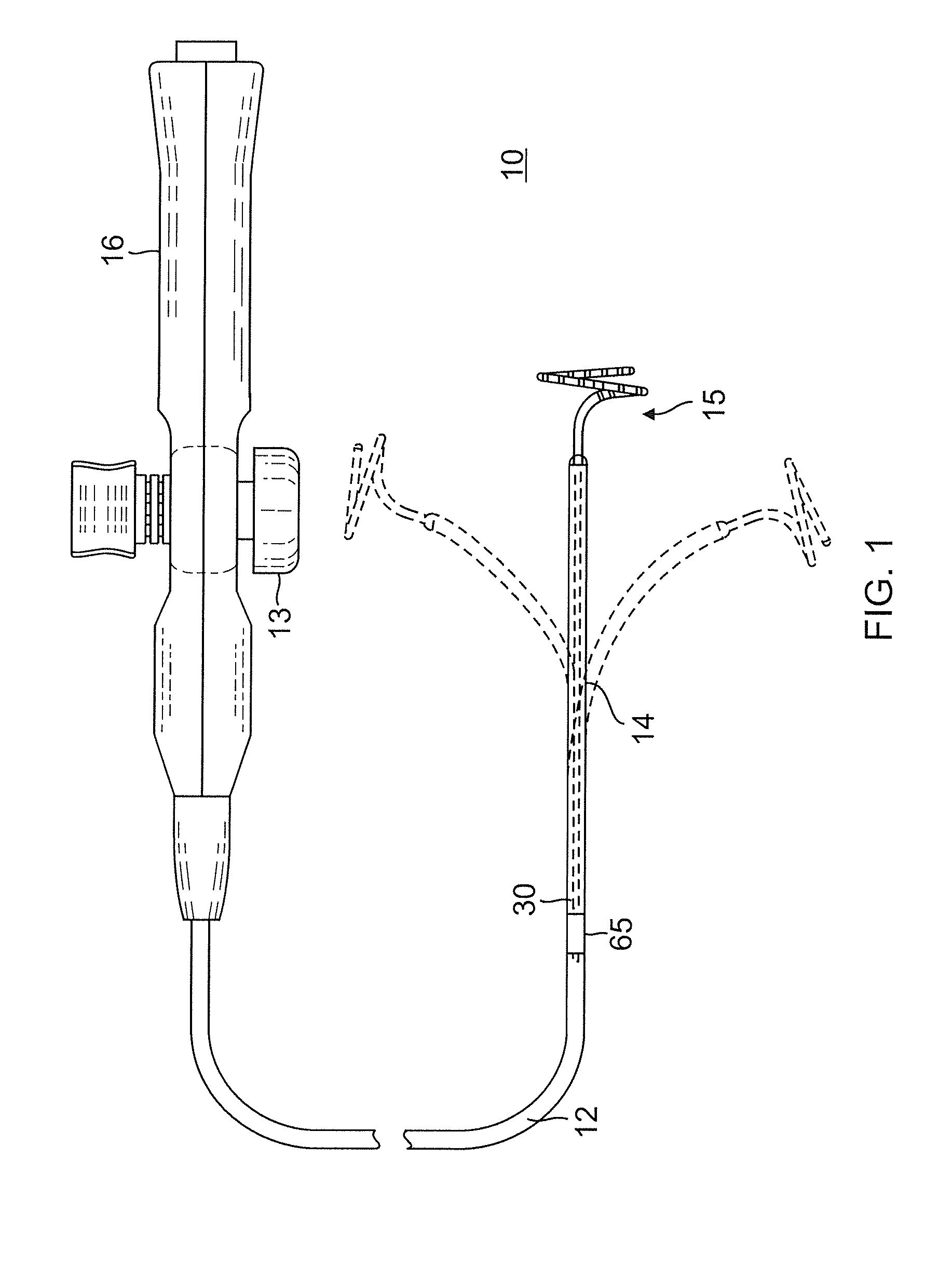Catheter with flat beam deflection in tip
a catheter and tip technology, applied in the field of medical devices, can solve the problems of reducing and imposing significant stress on the puller wire, so as to reduce the size of the catheter, reduce the force required to bend the deflection beam, and increase the durability of the puller wire
- Summary
- Abstract
- Description
- Claims
- Application Information
AI Technical Summary
Benefits of technology
Problems solved by technology
Method used
Image
Examples
Embodiment Construction
[0051]The present invention is directed to a catheter having a catheter body (or shaft) and a deflectable distal portion having an elongated flat beam or “blade” to effectuate precise on-plane bi-directional deflection while maximizing space within the catheter for components including lead wires, puller wires, cables, tubings and any other support members for advanced distal tip designs. With reference to FIG. 1, a catheter 10 in accordance with an embodiment of the present invention includes a catheter body 12, a deflectable distal section 14 distal of the catheter body, and a control handle 16 proximal of the catheter shaft. The deflectable section 14 has a tip assembly 15 having, for example, a lasso design with a generally circular main portion extending and oriented transversely from a distal end of the deflectable section 14. Bi-directional deflection is effectuated by user manipulation of an actuator 13 provided on the control handle 16 which moves a puller wire that extends...
PUM
| Property | Measurement | Unit |
|---|---|---|
| shore hardness | aaaaa | aaaaa |
| shore hardness | aaaaa | aaaaa |
| diameter | aaaaa | aaaaa |
Abstract
Description
Claims
Application Information
 Login to View More
Login to View More - R&D
- Intellectual Property
- Life Sciences
- Materials
- Tech Scout
- Unparalleled Data Quality
- Higher Quality Content
- 60% Fewer Hallucinations
Browse by: Latest US Patents, China's latest patents, Technical Efficacy Thesaurus, Application Domain, Technology Topic, Popular Technical Reports.
© 2025 PatSnap. All rights reserved.Legal|Privacy policy|Modern Slavery Act Transparency Statement|Sitemap|About US| Contact US: help@patsnap.com



